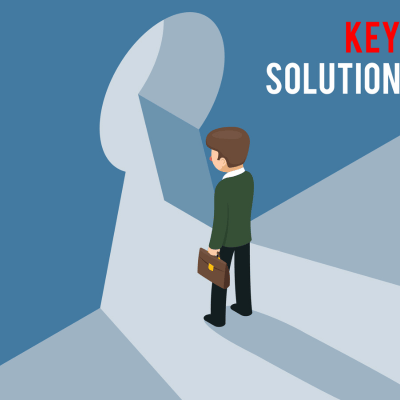Unlocking Success: The Role of Key Equipment Finance in Business Growth
In the ever-evolving landscape of business operations, strategic equipment acquisition is pivotal in driving growth and enhancing competitiveness. Key equipment finance emerges as a vital tool in this endeavor, providing businesses with the necessary resources to acquire, update, or expand their operational capabilities without straining their cash reserves. In this guide, we’ll explore the role of equipment finance in unlocking business success and discuss its various benefits.
What is the Role of Equipment Finance in Business?
Equipment finance refers to a financial product that allows businesses to acquire, lease, or loan the machinery and equipment needed for operational purposes. This financing model is crucial for facilitating business expansion, technological upgrades, and overall operational efficiency.
- Facilitating Growth: By enabling the acquisition of state-of-the-art equipment, businesses can scale operations, enter new markets, and increase production capacity.
- Managing Cash Flow: Financing allows businesses to preserve cash for other essential operations, ensuring liquidity and financial stability.
- Staying Competitive: Access to the latest technology through financing keeps businesses at the forefront of innovation, crucial for maintaining a competitive edge.
Types of Equipment Financing
The landscape of equipment finance is diverse. Offering various products to meet the unique needs of different businesses:
- Loans and Leases: Traditional equipment loans provide businesses with the capital to purchase equipment outright, while leases offer the use of equipment for a specified term without the commitment of ownership.
- Vendor Financing: Some equipment manufacturers offer financing directly to customers, often with competitive terms and streamlined approval processes.
- Specialized Financing Solutions: Specialized financial institutions often offer tailored solutions for specific industries, such as construction equipment finance and consumer equipment financing.
Why Would a Business Consider Equipment Financing?
Several factors make equipment financing an attractive option for businesses looking to grow:
- Upfront Cost Mitigation: Equipment can represent a significant capital expenditure. Financing alleviates the burden of large upfront payments, enabling businesses to invest in essential assets without depleting their reserves.
- Flexibility and Scalability: Financing options provide flexibility to upgrade or return equipment, allowing businesses to adapt to changing technologies and market demands.
- Tax Advantages: Certain types of financing, like leases, may offer tax benefits, including deductions for lease payments as a business expense.
- Accessibility for Startups: Equipment loans for startup businesses offer the opportunity to access the equipment they need to operate and grow, even with limited capital.
Equipment finance also enables businesses across various sectors to leverage the equipment they need to stay competitive.
How Equipment Financing Can Benefit Your Business
Equipment financing stands as a pivotal strategy for businesses aiming to grow their business without compromising their financial health.
- Enhanced Cash Flow Management: One of the most significant advantages is the preservation of cash flow. Financing allows businesses to avoid the hefty upfront costs associated with purchasing new equipment. Ensuring that working capital remains available for other critical business needs.
- Access to the Latest Technology: With equipment financing, businesses can regularly update their machinery and technology, staying ahead in efficiency and productivity. This is crucial for maintaining a competitive edge in industries where technological advancements are rapid.
- Customizable Payment Structures: Financing solutions often come with flexible payment options, tailored to match the business’s cash flow patterns. This customization can significantly ease the burden of large investments. Making it easier to plan and budget for future expenses.
- Mitigation of Obsolescence Risk: Leasing equipment, in particular, mitigates the risk of obsolescence. Allowing businesses to upgrade to newer models at the end of the lease term without the hassle of selling outdated equipment.
- Tax Benefits: Depending on the structure of the financing agreement, businesses may be able to deduct payments as a business expense, enjoy depreciation benefits, or capitalize on specific tax incentives for leased equipment.
The Best Equipment Finance Solutions in 2024
As we look towards 2024, several equipment finance solutions stand out for their ability to meet the evolving needs of businesses. These top solutions cater to a broad spectrum of industries, ensuring that businesses can find the financing option that best fits their unique requirements.
Flexible Lease Programs
Solutions that offer both operating leases for short-term needs and finance leases for long-term investment are becoming increasingly popular. These programs provide businesses with the flexibility to choose based on their equipment usage patterns and financial goals.
Vendor-Specific Financing
Direct financing from equipment manufacturers or distributors continues to be a favorable option for businesses. These arrangements often include competitive rates and the convenience of one-stop shopping for both equipment and financing.
Online Equipment Finance Platforms
The rise of digital finance platforms has simplified the process of securing equipment financing. These platforms offer quick comparisons of terms and rates from multiple lenders. Making it easier for businesses to find the best deals.
Specialized Financing for Startups
Recognizing the unique challenges faced by startups, some finance companies are offering equipment loan programs specifically for startup businesses. These programs are designed to cater to new enterprises with limited credit history or collateral.
Construction Equipment Finance
For businesses in the construction industry, specialized construction equipment finance programs cater to the high costs and specific needs associated with construction machinery, offering tailored terms that align with project timelines.
Consumer Equipment Financing
Tailored for businesses that serve end consumers, such as fitness centers or medical practices, this financing solution focuses on the types of equipment that directly generate revenue through consumer use.
Equipment financing serves as a critical tool for businesses seeking to capitalize on growth opportunities without straining their financial resources. By choosing the right financing solution, businesses can enjoy the benefits of modern equipment, maintain operational efficiency, and navigate the path to success with confidence.
Conclusion
Equipment financing emerges as a strategic enabler for business growth, offering a pathway to access essential machinery and technology while preserving cash flow and staying competitive.
Whether through leases, loans, or vendor-specific financing, the right equipment finance solution can unlock potential and propel businesses toward their growth objectives, ensuring they remain agile and resilient in the face of evolving industry demands.













